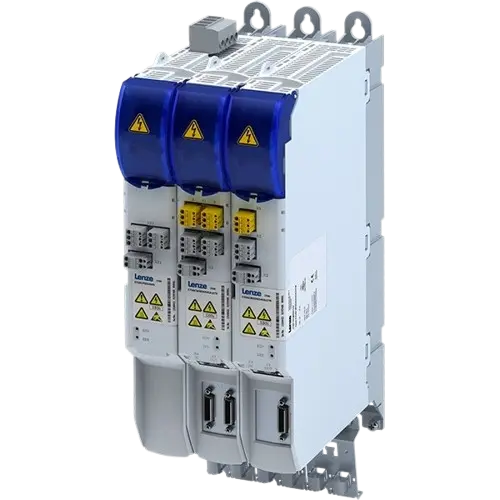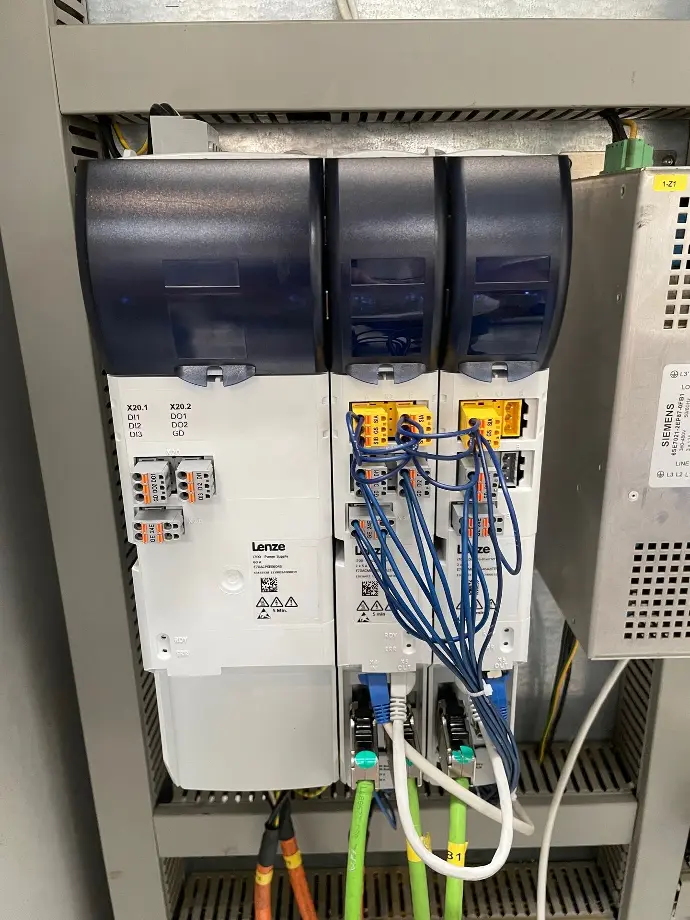Vertical Cutting Machine Modernization with Lenze Technology
The device is designed for cutting foam blocks into precisely specified dimensions. It is equipped with a mechanism consisting of two linearly adjustable guides, which are used to hold the material in place. The cutting is performed by a saw mounted on a sliding arm. The entire system is controlled by servomotors, which allow for positioning of the cutting unit and guides with millimeter precision, ensuring high quality and accuracy of cuts.
CUSTOMER REQUIREMENTS
- Replacement of the control system (PLC), inputs-outputs, control panel (HMI), and frequency inverters
- Complete reprogramming of the vertical cutting device
- Optimization of individual cutting modes
PROGRAMING
The task involved the complete reprogramming of a saw control system using the PLC3 Designer software from Lenze. The first phase focused on activating the individual servo drives and testing basic positioning operations of the guides and saw arm. Following this, the cutting mechanism itself was activated.
Once the drives were successfully activated and the functionality of all sensors and safety elements verified, the main programming began. This phase involved developing control algorithms and synchronizing the system's components.
Four operating modes were implemented into the system: Manual, Semi-Automatic, Automatic, and Service mode. The key reason for the system reconfiguration was to optimize the functionality of these modes. The entire machine is now operated via a newly installed HMI interface.
The reconstruction resulted in significantly improved reliability and adaptability of the system, reducing cycle times and speeding up setup processes. Additionally, since the system is based on Lenze components, diagnostics and troubleshooting were simplified.
Want to modernize your cutting or motion-based equipment?
Contact our team for a custom automation solution.







